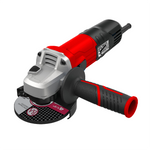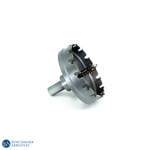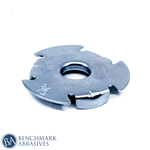
Best and Quick Ways to Remove Rust from Metal

It is crucial to protect valuable furniture or working tools against rust damage, especially during the monsoon and winter months when the rate of rusting is higher due to an abundance of moisture in the atmosphere. Despite constant attempts, the majority of homeowners and professionals are unable to stop their materials from corroding and rusting because it is an inevitable occurrence.
When a metal object starts to rust, you have no choice but to take some serious action. It's not as difficult as you would have imagined removing the rust from the metal.
Oxidation is a reaction that occurs when iron, iron alloys, or steel is exposed to oxygen and water. This corrosion has a reddish-brown flaky layer on it and is often referred to as rust. Although all metals are capable of some sort of corrosion, the term "rust" is only used to describe iron, iron alloys, and steel.
Tarnish vs. Rust: What's the Difference?
Since we now know which metals will rust, we can rule out those materials and assert that all other metals will corrode or tarnish to some extent. The majority of tarnished items that we see are often made of copper. The patina (greenish staining) is brought on by copper oxidizing, which leads to the development of this tarnished layer. Because copper is a metal that is mixed into sterling silver, you occasionally find a ring on your finger that is green in color.
Non-Rusting Metals
Metals that do not rust include aluminum, brass, bronze, galvanized steel, stainless steel, COR-TEN steel, copper, titanium, and noble metals like gold, silver, and platinum. They won't rust, but they may corrode, discolor, or tarnish.
6 Fastest Ways to Remove Rust from Metal
1. Fiber Wheels
This is by far the quickest and easiest way to get rid of rust from your metal objects. Wearing protective gear (goggles, eye mask, etc.), Using a rotary tool, such as a Dremel, attach a Brown (coarse) EVE Fiber wheel Abrasive Buff wheel and set the speed to about 7,000rpm. The rust will vanish in a few seconds if you gently run the abrasive across the metal. Use the Black (medium) to pre-polish the metal and the Red (fine) to finish polishing it if you want to restore the metal to its previous luster and brilliance.
2. Rubber Polishing Abrasive
These EVE rubber abrasive polishers work just as quickly and easily as the Fiber wheels and leave no mess. They come in a variety of sizes, grades, and forms. The simplest way to de-rust your metal jewelry tools is by setting a 500-grit (blue, extremely coarse) EVE Technic Polisher in your rotary tool. You can opt to use a 3mm pin to get into tight corners, for example, or a radial bristle perfect for intricate areas—because they come in a variety of shapes, mounted and unmounted.
For vast surface areas, use a large cylinder. For smaller rust removal jobs from metal objects, prefer a small cylinder. You can then choose finer grit rubber polishers from the same range, as with the fiber abrasive wheels discussed above, to restore the metal to its original mirror brilliance.
3. Aluminum Foil Or Steel Brush Wheel
Utilizing steel and aluminum as an abrasive is a successful way to remove rust. Aluminum Foil: Tear off a tiny piece, dunk it in vinegar or water, then brush it over the rusty sections. Utilize a Dremel or other rotary tool with a steel brush wheel or steel wire pen brush. These have been used for rust removal for a long time but are not as efficient as the methods mentioned above.
4. Lemon Juice Or Vinegar With Salt
Another do-it-yourself method for rust removal from your instruments is applying a pinch of salt to the rusted areas and using acidic solutions like lemon juice and vinegar. After a few hours, take it out. The oxalic acid in the potato will reportedly also dissolve away rust, though this is not a process we've tried and tested.
5. Sodium Bisulfate (Mixed with water)
For a safe and fume-free alternative to hydrochloric acid (HCl), consider using sodium bisulfate, a commonly used pool-cleaning chemical. When mixed with water, sodium bisulfate can effectively remove rust even at the same concentration as sulfuric acid. However, it does not produce harmful fumes. If you prefer a gentler approach, a combination of acetic and citric acid can also be used to remove rust. However, it may take considerably longer to get the desired results.
After using acid to remove rust from metal, neutralize any remaining residue with baking soda. This mild abrasive (Sodium Bicarbonate) can be mixed with water to form a paste and gently scrub away rust spots from stainless steel without scratching them.
Vinegar and salt can be used to remove rust, but this combination creates hydrochloric acid. Chloride ions, which are commonly found in seawater, can contribute to rust formation. Therefore, any residual vinegar and salt mixture should be thoroughly rinsed away or neutralized with ammonia or a similar agent to prevent future rusting.
ADDITIONAL WAYS OF REMOVING RUST FROM METAL
6. A Bath with Vinegar
It works best on all-steel objects or heavily rusted tools since, once immersed, a vinegar bath requires relatively little effort to remove the rust. This rust removal technique is easy to use and may be left to work without the need for constant supervision, even if the object must sit overnight for the best results.
Submerge your rusty object completely in white vinegar for the entire night. After soaking, scrape and remove the rust using steel wool or a metal brush. If the object cannot be removed and submerged, you can wet a rag with white vinegar and wrap it around the rusty area.
How Can Metal Be Kept From Rusting
Rust develops automatically over time and tarnishes the look of metal items. To slow down the rate of rust production, you can take a few preventive actions.
- Keep moisture at bay: Cover your toolset when not in use to keep it dry and protect it from moisture. If you have the space, you may also place it inside, perhaps in your garage or a shed.
- Dry off any metal objects: Rust is prevented from occurring on metal objects with routine maintenance. Regularly wipe the item off with a clean, dry cloth, especially in humid conditions.
- Use rust-resistant paste wax: To prevent rust, apply a thin layer of paste wax, paint, grease, or oil as a water-repellent layer.
- Put coverings on Use coverings to protect against rain and harsh sunlight.
These are the six quickest and easiest methods for getting rust off of metals. Although there are additional methods for eliminating rust from metal, the top six are listed above. Follow these easy instructions to restore your priceless item to its original condition without spending a lot of money.



































































